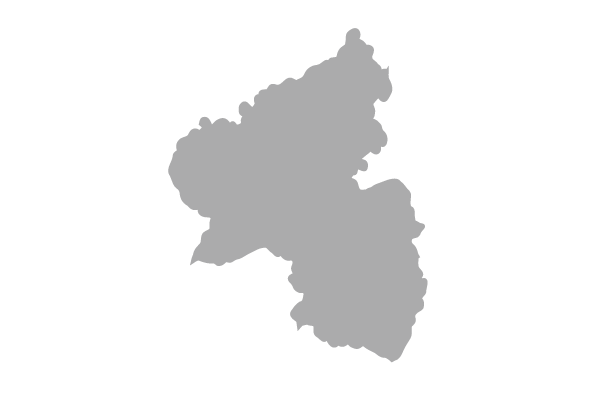In Rheinland-Pfalz erfüllen die Natura 2000 Gebiete die IUCN Kategorie IV (Habitat Species management area) und 3 Naturschutzgebiete die IUCN Kategorie V (Protected Landscape/seascape). IUCN Protected Areas Categories System Ia Strict Nature Reserve Category Ia are strictly protected areas set aside to protect biodiversity and also possibly geological/geomorphical features, where human visitation, use and impacts are strictly controlled and limited to ensure protection of the conservation values. Such protected areas can serve as indispensable reference areas for scientific research and monitoring Ib Wilderness Area Category Ib protected areas are usually large unmodified or slightly modified areas, retaining their natural character and influence within permanent or significant human habitation, which are protected and managed so as to preserve their natural condition. II National Park Category II protected areas are large natural or near natural areas set aside to protect large-scale ecological processes, along with the complement of species and ecosystems characteristic of the area, which also provide a foundation for environmentally and culturally compatible, spiritual, scientific, educational, recreational, and visitor opportunities. III Natural Monument or Feature Category III protected areas are set aside to protect a specific natural monument, which can be a landform, sea mount, submarine cavern, geological feature such as a cave or even a living feature such as an ancient grove. They are generally quite small protected areas and often have high visitor value. IV Habitat/Species Management Area Category IV protected areas aim to protect particular species or habitats and management reflects this priority. Many Category IV protected areas will need regular, active interventions to address the requirements of particular species or to maintain habitats, but this is not a requirement of the category. V Protected Landscape/ Seascape A protected area where the interaction of people and nature over time has produced an area of distinct charcter with significant, ecological, biological, cultural and scenic value: and where safeguarding the integrity of this interaction is vital to protecting and sustaining the area and its associated nature conservation and other values. VI Protected area with sustainable use of natural resources Category VI protected areas conserve ecosystems and habitats together with associated cultural values and traditional natural resource management systems. They are generally large, with most of the area in a natural condition, where a proportion is under sustainable natural resource management and where low-level non-industrial use of natural resources compatible with nature conservation is seen as one of the main aims of the area
Raumbezug
Lage der Geodaten (in WGS84)
| SW Länge/Breite | NO Länge/Breite | |
|---|---|---|
| Rheinland-Pfalz (07) | 6.178°/48.935° | 8.513°/50.947° |
| Regionalschlüssel |
|---|
| Koordinatensystem |
|---|
Verweise und Downloads
Weitere Verweise (4)
Untergeordnete Objekte (3)
Übergeordnete Objekte (1)
| Identifikator des übergeordneten Metadatensatzes |
E2955909-B775-4EF9-896C-3C4907D7845F |
|---|
Nutzung
| Nutzungsbedingungen |
|---|
| Zugriffsbeschränkungen |
no limitations to public access |
|---|
| Anwendungseinschränkungen |
keine |
|---|
Kontakt
Point of Contact
|
Ministerium für Klimaschutz, Umwelt, Energie und Mobilität Abteilung 2 (MKUEM) - Naturschutz und nachhaltige Entwicklung Referat 22 (MKUEM) - Haushalt, IT und sonstige Querschnittsaufgaben der Naturschutzverwaltung
Postfach 31 60
|
Custodian
|
Ministerium für Klimaschutz, Umwelt, Energie und Mobilität Abteilung 2 (MKUEM) - Naturschutz und nachhaltige Entwicklung Referat 22 (MKUEM) - Haushalt, IT und sonstige Querschnittsaufgaben der Naturschutzverwaltung
Postfach 31 60
|
Fachinformationen
Informationen zum Datensatz
| Klassifikation des Dienstes |
Map access service (WMS, WMTS, API Maps etc.) |
|---|
| Art des Dienstes |
View Service |
|---|
Operation
| Name der Operation | Beschreibung der Operation | Aufruf der Operation | |
|---|---|---|---|
| GetCapabilities |
http://map1.naturschutz.rlp.de/service_lanis/mod_wms/wms_getmap.php?mapfile=group_gdide&service=WMS&version=1.1.1&Request=GetCapabilities |
||
| GetCapabilities Dokument | Kartenansicht öffnen |
|---|
Zusatzinformationen
Konformität
| Spezifikation der Konformität | Spezifikationsdatum | Grad der Konformität | Geprüft mit |
|---|---|---|---|
| VERORDNUNG (EG) Nr. 976/2009 DER KOMMISSION vom 19. Oktober 2009 zur Durchführung der Richtlinie 2007/2/EG des Europäischen Parlaments und des Rates hinsichtlich der Netzdienste | 20.10.2009 | ||
| Technical Guidance for the implementation of INSPIRE View Services | 04.04.2013 |

